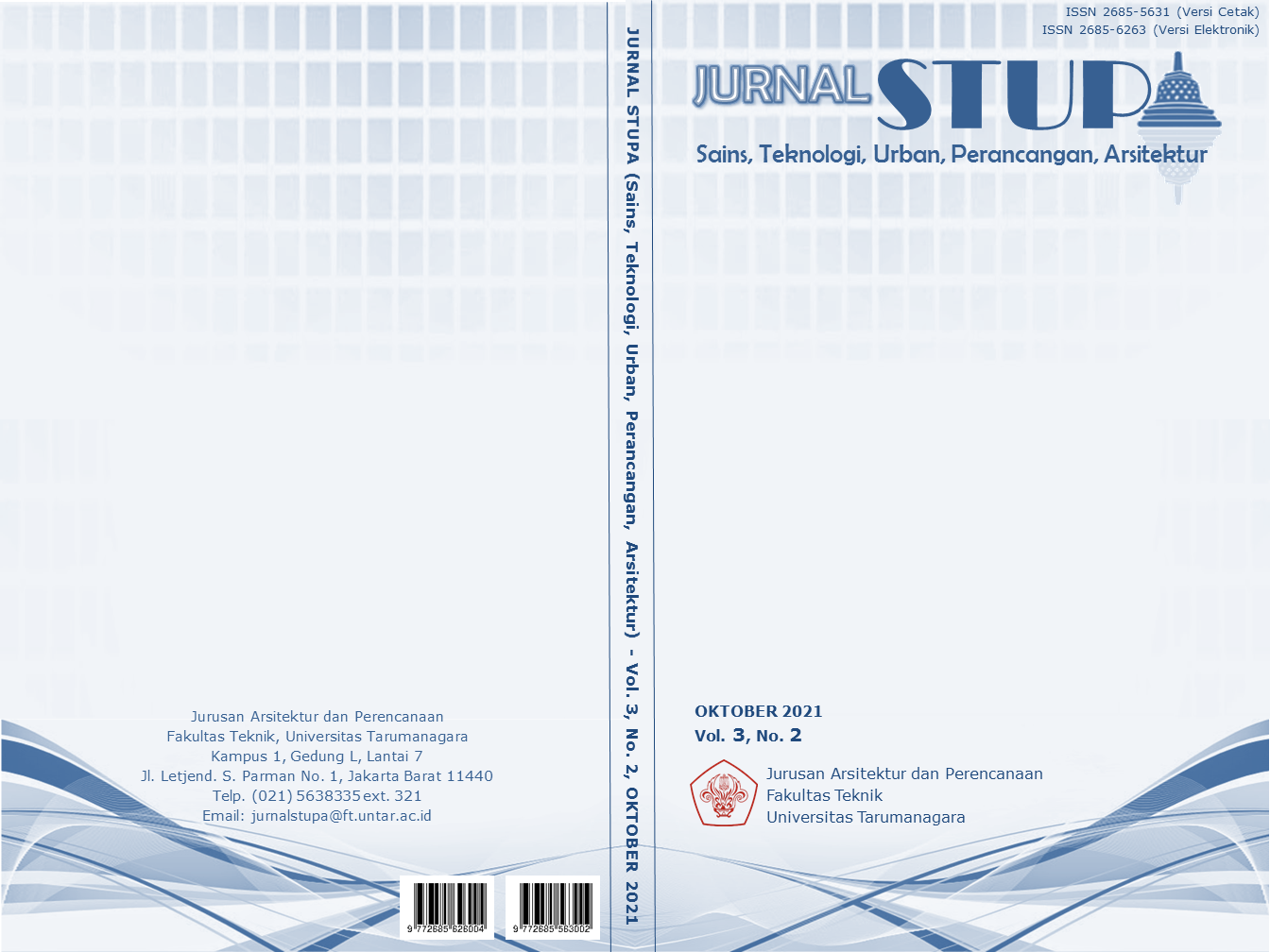VERTICAL FARMING SEBAGAI UPAYA KONSERVASI EKOLOGI BUMI
Main Article Content
Abstract
Food has always been a staple need for humans. And humans always have so many ways to keep producing food in larger quantities and better qualities with a lot of variety. The activity of producing food always has a strong connection to the ecosystem condition of where the human population resided. One of the most contributing elements to food production for the human population is the agricultural industry. As one of the most contributor to human food production, technological advancement in the agricultural industry has always been the main topic of researches related to food. But recently these advancements have affected the ecology. For example, the use of pesticide and other chemicals becomes pollution for rivers and lakes around farms. Conventional agriculture requires a lot of area to sustain human food needs. These areas are taken from many natural ecologies like rainforests or other bio-spheres, the damages done to nature will affect the natural food chain and eventually affects humanity itself. The use of vertical spaces of human cities can be used as an alternative to the ever expanding needs of space for the food industry. This concept is called “Vertical Farming”. this effort can be the solution for humans who now live mostly in cities to provide for their own, without damaging the ecology more. Ragunan Stack Farm : Producing Food From City for The City is an architectural effort to move food industry activities back to cities, using sustainable development approach and energies as an approach to go beyond ecology.
Keywords : Agriculture; Beyond Ecology; Consumption; Population; Stack Farming; Vertical Farming
Abstrak
Makanan adalah kebutuhan pokok manusia. Manusia memiliki berbagai macam cara untuk terus menghasilkan makanan dengan jumlah yang semakin banyak dan kualitas yang bervariasi. Kegiatan untuk produksi makanan ini selalu memiliki koneksi yang erat dengan keadaan ekosistem dimana populasi manusia itu berada. Industri pertanian merupakan salah satu kontributor terbesar produksi makanan. Sebagai sumber utama bahan baku makanan manusia, kemajuan teknologi industri pertanian menjadi fokus utama riset pangan. Kemajuan ini banyak mempengaruhi ekologi. Penggunaan pestisida dan zat kimia dalam industri pertanian mengakibatkan polusi air bagi sungai dan danau di sekitar lahan pertanian. Pertanian konvensional membutuhkan area yang sangat luas untuk menopang kebutuhan pangan manusia. Dengan memanfaatkan ekosistem alami seperti hutan hujan dan jenis bio-sphere lainnya, rusaknya keadaan alam juga menghancurkan rantai makanan alami yang lambat laun akan mempengaruhi manusia itu sendiri. Pemanfaatan ruang-ruang vertikal kota dapat menjadi salah satu solusi alternatif dari industri makanan yang selalu harus bertumbuh. Konsep ini biasa disebut sebagai program “Vertical Farming”. Upaya ini dapat menjadi solusi bagi manusia yang sekarang banyak tinggal di kota untuk memenuhi kebutuhannya tanpa harus merusak keadaan ekologi lebih jauh lagi. Tani Tumpuk Ragunan; Produksi Makanan dari Kota Untuk Kota merupakan upaya desain secara arsitektural untuk mengembalikan kegiatan produksi makanan ke dalam kota dengan memanfaatkan tenaga-tenaga terbarukan sebagai bentuk pendekatan melampaui ekologi.
Article Details
Section
References
Andre, V. (1999). Continuous Productive Urban Landscapes : Designing Urban Agriculture for Sustainable Cities. Oxford: Oxford Architectural Press.
Bailkey M., J. N. (2000). From Brownfields to Greenfields: Producing Food in North American Cities. Chicago: CSFC.
Capra, F. (1996). The Web of Life. London: Doubleday.
Dan L. Perman, J. C. (2004). Practical Ecology. London: Island Press.
Devall, B. (1985). Deep Ecology. Salt Lake City: Gibbs M. Smith.
FIBL & FOAM. (2020). The World of Organic Architecture. 1.
J
orgenssen, S. (2002). Ecology and Enviorment (Vol. 3). Copenhagen: Springer-Science+Business-Media,B.V.
Paull, J. (2019). Organic Agriculture in Australia Attaining the Global Majority (51%). American Insititute of Science (Journal of Enviorment Protection and Sustainable Development)

